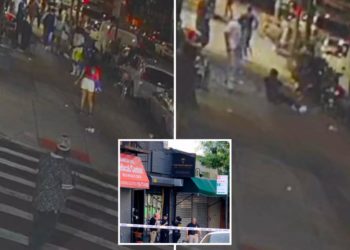To numb the traumas of wartime Gaza, Rahma Abu Abed, 12, plays a game with her friends. They ask one another: What did you eat before the war? What did your home look like before the war? What would you wear if you had new clothes?
For Rahma, who recounted these details in an interview alongside her mother, Heba, the answers are often less soothing than tragic. She hasn’t eaten meat in months, her parents said. Her home in southern Gaza has been flattened, satellite imagery shows. Her clothes are mostly under the rubble. The beach, where her parents occasionally took her as a treat before the war, has become her full-time home.
Rahma now lives in a storehouse for fishing equipment with her parents and four siblings, who share the space with several displaced families. She usually eats one meal a day, often lentils or pasta, her parents said. Trying to remember what good food looked like, Rahma plays with the wet sand, shaping it into imaginary meals.
“If someone gave me a choice between crayons and bread,” Rahma said, “I would choose the bread.”
After 22 months of war, childhood in Gaza hardly exists.
The post The Trauma of Childhood in Gaza appeared first on New York Times.




